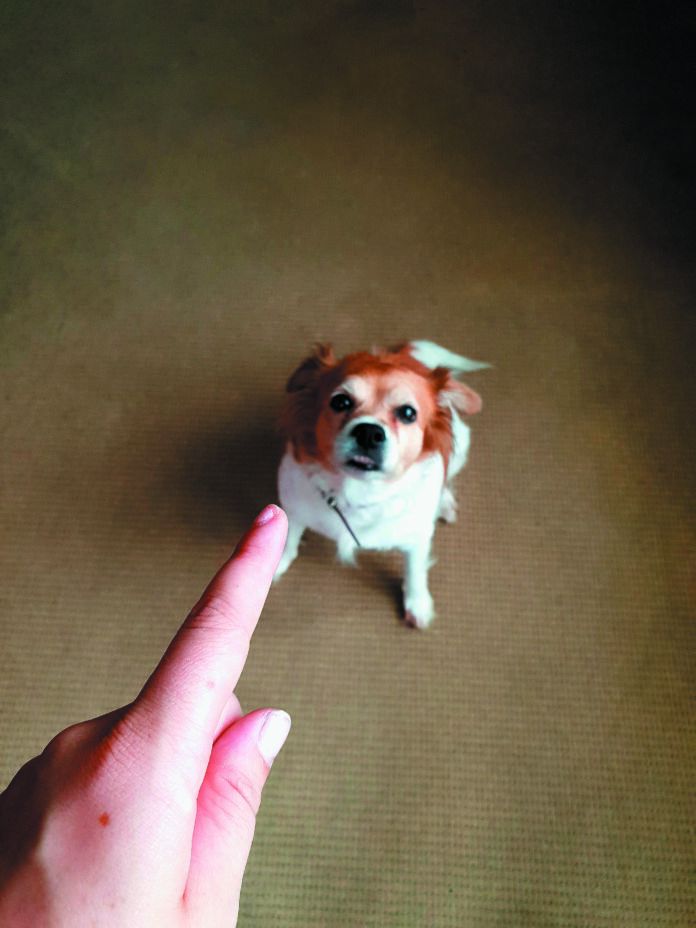You know never to hit your dog and would never intentionally do anything to harm her. You know, too, that the best way to teach her not to do something is to redirect her attention by showing her what to do and rewarding her for getting it right. Still, you may be engaging in a number of punishing behaviors that don’t help your pet learn the ropes and worse, diminish her trust in you and fray the good bond you want to have with her. Here are three of the most common aversive techniques that interfere with your dog’s sense of security — along with failing to really help her understand what you expect of her.
Yelling. When you yell at a dog for doing something you don’t want her to do, all she knows is that you’re angry. If she’s a timid dog, she will cringe. If she’s more resilient, she will learn to ignore you. Either way, even if she does what you want in the moment, she doesn’t really learn from the experience. Getting her to comply by bullying her doesn’t make you feel good, either.
How many times have you seen dogs off leash with their guardians calling to them more and more angrily to “Come!” Imagine if, instead of yelling, they held out a delicious treat and cued the dog to come in enthusiastic tones. A dog is much more likely to come when she knows the person has something good in store. Why would she return to an angry person’s side only to be closer to the source of impatience and disapproval?
Pulling on the leash. It can be very frustrating when walking your dog to keep waiting while she sniffs a blade of grass or a fire hydrant, or when she tries to pull you in a direction you don’t want to go. But yanking the leash only sets up a negative dynamic between the two of you. It lets her know that walks, which are supposed to be fun for her, come with unpleasant interactions.
Before you get frustrated, keep in mind that walks are often among the few times in the day that dogs have their people all to themselves. It means a lot to them. So let them sniff a little longer — it will add only a few minutes to your time outside. Also, consider whether you can live with going in the direction the dog wants. If it would make her happy and wouldn’t add considerably more time to her walk than the usual route you take, why not let her have her way?
Then, when you do need to get on with it, she will be more inclined to comply willingly because she will have had her fill. Additionally, she won’t feel anxious. Anxiety can make it very difficult for a dog (or a person) to follow through on a cue.
Showing anger. When a dog does something you don’t want and you react with anger — moving about abruptly, showing displeasure on your face, muttering about your annoyance — all she internalizes is your negative feeling, not how to behave instead. She truly doesn’t have a clue what she did wrong. To her, going through the garbage or doing something else that upsets you is just an expression of her natural instincts, not a way she has figured out to get your goat.
In such instances, the best thing to do is to secure the garbage can so she can’t rummage through it or take whatever other measures are needed to keep her from doing something you perceive as wrong. She certainly cannot learn from someone who is disgruntled with her. Imagine a young child trying to learn from someone whose anger was piqued without knowing what she did to elicit the negative emotion.
Research has shown that dogs taught how to behave with negative emotions feel chronically stressed and even pessimistic. Dogs trained with positive reinforcement, on the other hand, feel happy and confident. Which view of life do you want for your pet?





